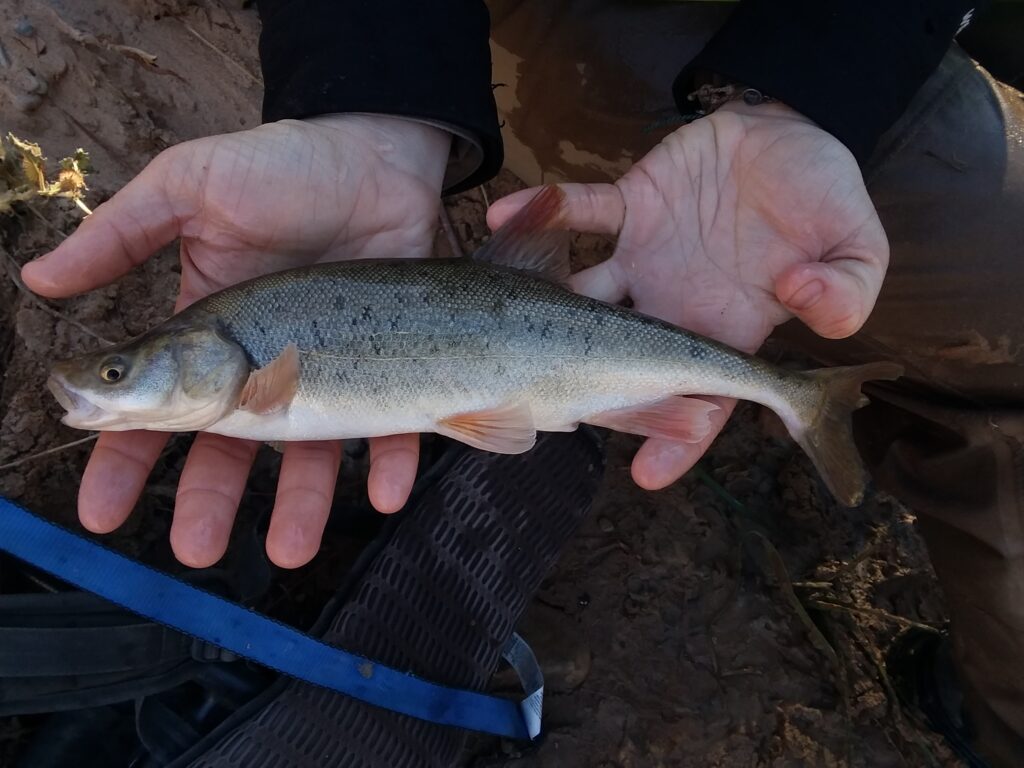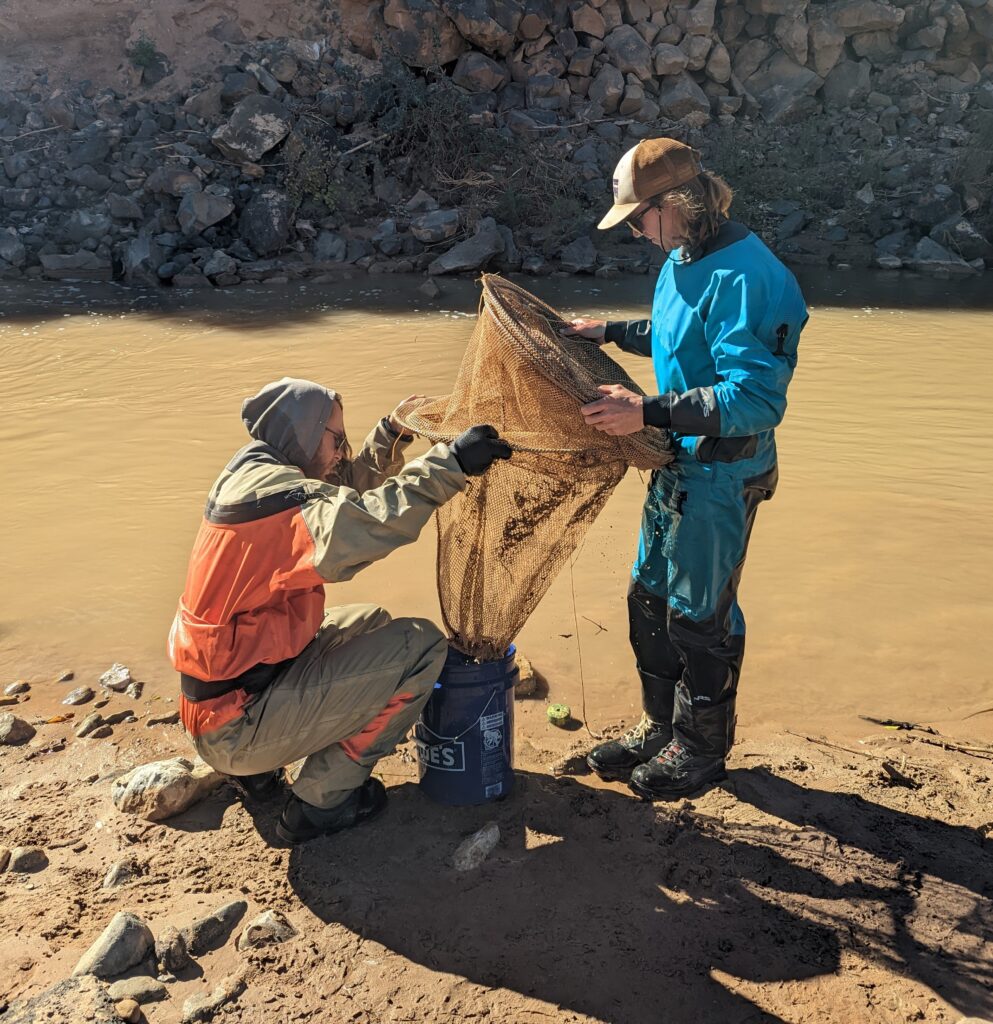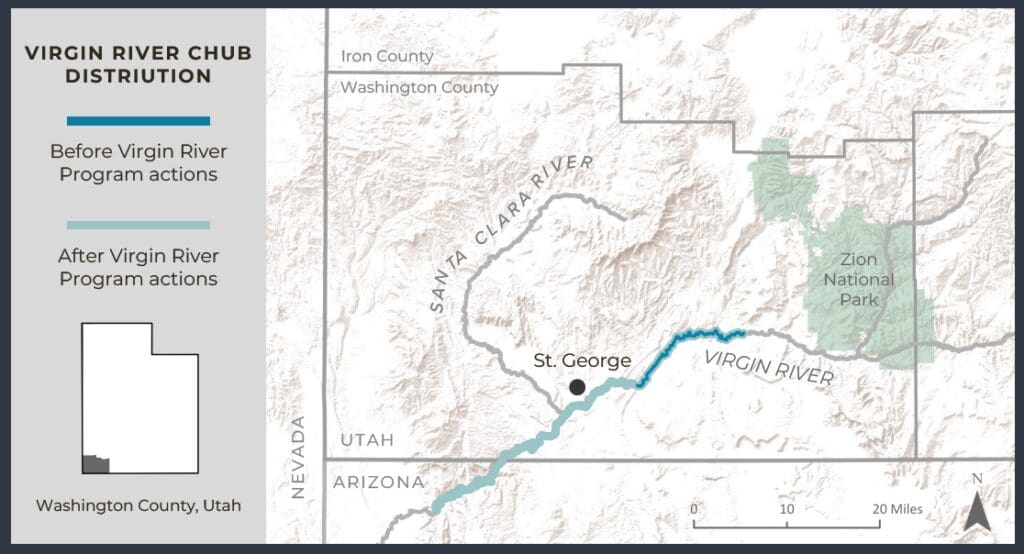The Remarkable Recovery of the Virgin River Chub

Desert Denizen
Beautiful and elusive, the Virgin River Chub is the top native predator in the Virgin River. It is a fast, streamlined fish with a sloped forehead, humped back, and thin, rounded tail. Chub can grow to a length of 18 inches and live more than 10 years in the wild.
Collaborative Conservation
Unfortunately, threats from non-native fish species and habitat loss caused Virgin River Chub populations to decline, and the fish was federally listed as an endangered species under the Endangered Species Act in 1989. This marked a critical point in the history of this species, signaling the urgent need for conservation efforts.
In response to these threats, Virgin River Program partners began implementing conservation actions in 1998 to protect chub and other native fish. Key program activities included:
- Protecting and restoring chub habitat throughout the Virgin River
- Controlling and eradicating non-native fish species, especially the highly invasive Red Shiner
- Maintaining genetic refuge at Wahweap Hatchery to supplement wild populations
- Improving water quality and temperature in the river by providing water releases
- Providing outreach and education for local communities and schools
- Monitoring Virgin River Chub population health to evaluate recovery actions.

Turning the Tide
These efforts have been successful. Despite periods of extreme drought, wildfires, and flooding, Virgin River Chub populations are rebounding. Regular monitoring conducted by the Utah Division of Wildlife Resources shows that healthy, self-sustaining chub populations have returned to the Virgin River.

The Road Ahead
While the recovery of the Virgin River Chub is a testament to the effectiveness of collaborative conservation efforts, the journey is far from over. Ongoing monitoring and adaptive management strategies will be crucial in ensuring the long-term survival and flourishing of this iconic species in its native habitat.